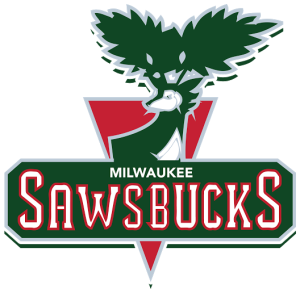
reader comments
18 with 15 posters participating
Draft league is probably nothing like the Pokémon you’re familiar with. It’s not training up a team of your favorite Pokémon to beat Team Rocket. It’s not even like an official competitive tournament run by The Pokémon Company.
And it all started with a bumper sticker.
Steve “Magnitude” Wood is the YouTuber and sports fanatic who came up with the concept of combining his two passions. “I’m a huge Milwaukee Bucks basketball fan,” he tells Ars Technica. “And I thought the Pokémon Sawsbuck looks a lot like the Milwaukee Bucks logo. One of my friends was a graphic designer, so she made me a sticker, and I got it printed and put it on my car.”
That’s when he realized the potential for a competitive Pokémon league based on the same draft systems used in “regular” sports like baseball or American football (and the popular “fantasy sports” versions that surround them). In these sports, contracts and the limitations of corporeal bodies means only one team can use any one player at any given time.
That’s not the case in Pokémon tournaments, where you often see the same powerful monsters appearing in nearly every team. According to stats website Pikalytics, in 2019 an estimated 86 percent of teams at VGC competitions (the official tournaments run by The Pokémon Company) used Incineroar, and nearly 45 percent included Mega Rayquaza.
Imagine if 86 percent of NFL teams fielded Aaron Donald each week. For starters, no quarterback would make it out alive. But it would also get a bit boring after a few matches.
Wood knew that he couldn’t simulate the brutal physicality of American football or the speed and athleticism of a basketball player in a virtual game more similar to chess. But if he could invoke the same nail-biting tension that he felt when rooting for the Bucks, he knew he’d be onto a winner. So he started by drafting a team for fans to get behind.
The Draft
In the NFL, the most in-demand players are drafted first and usually tied down with longer contracts. Wood tried to emulate this property with the Global Battle Association (GBA), the first-ever draft-league Pokémon tournament, which he debuted in 2012.
“There were 10 rounds [of the draft, and] the Pokémon you draft in the first three rounds you had for three seasons,” Wood said. “The next three rounds were for two seasons, [and] in the final four rounds, you had one season.
“So the idea was that you had to create an actual franchise,” he continued. “The first three ‘mons I’m going to have for three years. But the downside is that if you draft a bad team, you’re stuck with them for a couple of years.”

This system changed the game for Pokémon players, literally and figuratively, by adding a whole new layer of complexity to Pokémon selection. If standard Pokémon was “chess with 900 potential pieces,” most players just ended up choosing a lineup of all queens. In this new version, if you weren’t careful, you could end up with a roster full of pawns.
Drafting 10 Pokémon per team also adds an extra layer of strategy to choosing which monsters will fight in the standard six-on-six Pokémon battles. Suddenly, players had the opportunity to counter-pick monsters that might be particularly effective against powerful competition or hold a niche monster in reserve for a number of matches until they came across the one scenario when it could potentially shut down an opponent’s entire strategy. This lineup selection means a big part of the real battle is fought before the competitors even hit the field.
Team Building
“The reason I like draft league is because I think that any team can work,” says Joey “Pokéaim” Sciarrone, a YouTuber who exclusively streams competitive Pokémon battles. “I’m using Pokémon that are probably really bad, but I love to see how they do. And draft league takes that to the next level.”
Sciarrone’s team, the New York Dreepys, drafts unloved Pokémon and utilizes unique movesets to take opponents by surprise. He says Seaking, a fairly average Pokémon, really shines in this format because it is so difficult to prepare for. Its Lightning Rod ability gives it an immunity to electric-type attacks that are usually super-effective. But if Sciarrone knows you’ve drafted a strong grass-type to deal that super-effective damage instead, Seaking can pack a punch with Megahorn or Poison Jab to inflict a super-effective hit right back.
Nailing those surprise moves is the Pokémon equivalent of a home run or a three-point shot. It’s what keeps fans on the edge of their seats and what ultimately makes draft league so satisfying.
“I love having a game plan and just seeing it unfold in battle,” Sciarrone said. “That’s the thing that’s like, ‘Yeah, man, this is cool, the team won the way I wanted it to.'”
The intense preparation coaches put into building their teams only adds to the mind games within the matches themselves. For instance, if Sciarrone predicts his opponent will bring a grass-type attacker to take on his Seaking, he can use tools like Pokémon Showdown to estimate the damage he’ll deal and take from certain attacks. This way, he can train his Pokémon specifically to outspeed a potential counter, or he can invest in its attack enough to guarantee a one-hit knockout.
Listing image by WBE


